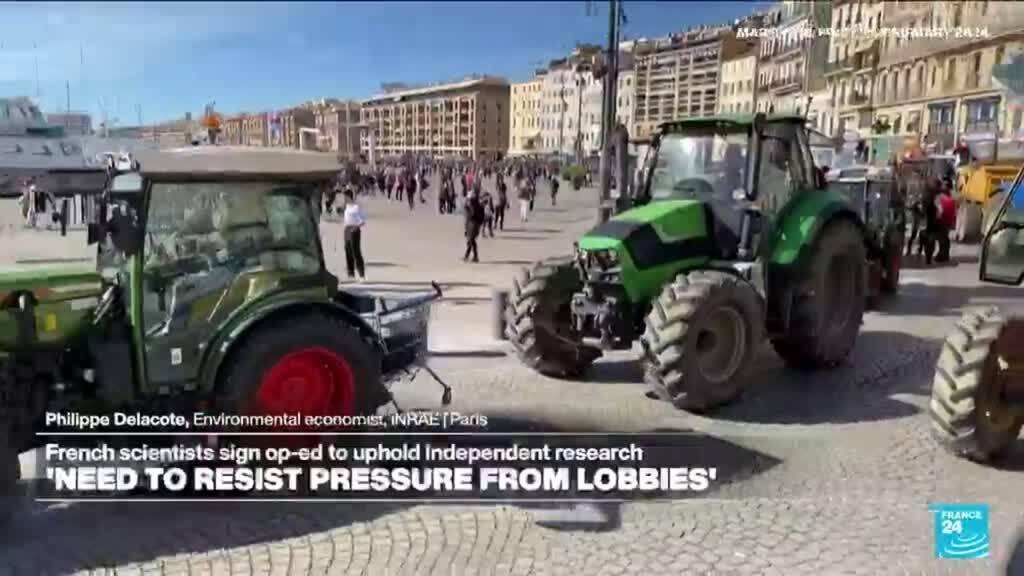What was once a huge river that flowed from Colorado through the Grand Canyon to the Gulf of California in Mexico is now reduced to a small river. Barely reaches the ocean.
Experts warn that the river basin is at breaking point, threatening water security for major cities like Los Angeles and Denver, harming endangered fish species, and threatening some of the largest food producers in the US.
Lakes Mead and Powell, the river’s largest reservoirs, are at critically low levels, a result of prolonged drought and rising temperatures. If water levels fall further, hydroelectric production at Hoover and Glen Canyon dams could be reduced, threatening energy supplies and recreation.
“The main cause of the problem in the Colorado River is a warming climate,” Jack Schmidt, director of the Center for Colorado River Studies at Utah State University, told DW.
“But the immediate or proximate cause of the entire crisis is our inability to quickly reduce our expenses in line with our declining incomes,” Schmidt said. In other words: overuse.
Struggle over increasing water shortage
About 40 million people in seven US states depend on the river for water, but the country also has an obligation to deliver supplies to Mexico. About half of the river’s water is used for millions of acres of surrounding farmland and about 18% goes to homes, cities, and industries.
A recent report,whose co-author Schmidt warns that if consumption continues at current rates the Colorado River Basin could shrink by the equivalent of 1.8 million Olympic swimming pools next year.
The river left California, Arizona, and Nevada in the lower basin, with Colorado, Utah, Wyoming, and New Mexico in the upper basin. The states are now locked in high-level talks on how to share the river’s dwindling supplies after 2026, when current water-sharing rules expire.
Kyle Roerink, executive director of the Great Basin Water Network, said, “We’re dealing with fundamental issues of scarcity. There aren’t a lot of resources that everybody wants and everybody needs.”
Who has the most rights over the river?
Water rights on the Colorado RiverThere is a complex web of claims, involving river basin states, Native American communities, and Mexico. Roerink said there are “different interpretations” of who has greater rights to water, especially in times of scarcity, and they have been debated for years.
The old “first in time, first in time” water allocation is considered more “senior” and is given priority during shortages. This creates tension between the upper basin – Colorado, Utah, Wyoming and New Mexico – and the lower basin – California, Arizona and Nevada. California has the most senior rights in the lower basin.
Part of the conflict centers on how much water is available. 1922 Colorado River Compact,which controls water distribution among seven states in the southwestern US, overestimates the river’s supply, allocating more water on paper than actually exists.
“States are really scared of what could happen and are essentially trying to say that they have the strongest rights over the water. They are setting the stage for bigger conflicts in the future,” Roerink said.
The upper basin states have long been using less than the allocated amount, while the lower basin pumps its full share. The upper basin states want to develop the water that was promised to them and are demanding a cut from the downstream states.
“But the Lower Basin states say: ‘We’ve developed an entire infrastructure, one of the largest economies on Earth, in Southern California. We can only do so much less,'” Schmidt said.
Thirsty alfalfa and other animal feed problems
Most of Colorado’s water goes to agriculture. Cattle-fed crops, such as alfalfa and other hay, account for about half of all direct water consumption.
The Upper Basin wants the Lower Basin to cut agricultural consumption, Schmidt said. However, “agricultural water use is all senior water rights, and we cannot tell those people not to use the water.”
Over the years, efforts to reduce water use have included paying farmers not to plant certain water-intensive crops.
But water laws don’t allow farmers to be forced to grow low-water crops, such as bean sprouts or barley, instead of alfalfa, Roerink said. There is also no economic incentive to move away from raising cattle feed, as Americans show no signs of cutting back on beef or dairy.
Negotiating under pressure: what happens next?
Colorado Basin states have until Nov. 11 to reach an agreement on actual water use reductions before the current guidelines expire. If they are unable to reach an agreement, the federal government will likely step in and put forward new rules.
Meanwhile, the level at Mead Reservoir is so low, Federal officials recently announced that Tier 1 water shortages will continue into 2026.This leads to water cuts in Arizona, Nevada and Mexico and California is spared because of its senior rights.
And experts like Roerink and Schmidt say the situation is so urgent that states should not wait until any new guidelines agreed upon in 2026 are in place.
“We have lost focus on the immediate crisis in front of us,” Schmidt said.
What can states do now to conserve water?
Great Basin Water Network has put forward nine recommendationsFor the river system. These include prohibiting new dams and diversion projects, pressuring all states to cut water use, and encouraging recycling of waste water.
“The number one thing we need to make sure is that we are not allowing new uses of water,” Roerink said, citing new water-hungry infrastructure such as cryptocurrency farms, data centers for artificial intelligence and real estate projects.
But according to the network, agriculture has the greatest potential to mitigate the Colorado River crisis. Investments in crop rotation, improved irrigation techniques, building canals and dry farming techniques can help save water which farmers can sell or lease to cities in times of drought.
“It is inevitable that we must make agricultural use of water more efficient than ever before, so that we can still maintain viable agricultural communities,” Schmidt said. “Reduce growing alfalfa and hay in the heat of summer when temperatures reach 120 degrees Fahrenheit. [49 degress Celsius]“We need to be targeted where we grow crops.”
Edited by: Jennifer Collins






Leave a Reply